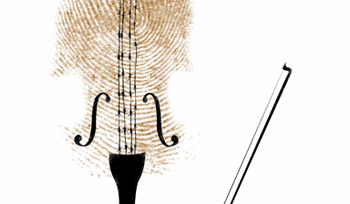Submitted by basma on
UNITED KINGDOM
Title:
R v. Secretary of State for the Home Department, ex parte V and T
Court:
House of Lords
Citation:
1998 AC 407
Date:
12 June 1997
Instrument(s) Cited:
Children and Young Persons Act 1933, section 53(1)
Criminal Justice Act 1991
Case Summary:
Background:
In February 1993, when V and T were 10 years old, they abducted a two-year-old boy from a shopping precinct, battered him to death and left him on a railway line to be run over. The subsequent trial was held in public, where the defendants were subjected to hostile crowds and extensive media coverage. The hearing was modified to a certain extent to accommodate the defendants’ age, but was conducted with the formality of an adult criminal trial. The defendants were convicted of murder and abduction in November 1993, and sentenced to detention during Her Majesty’s pleasure (“DHMP”). They did not appeal their convictions.
The sentence of DHMP - which was the mandatory penalty for children aged over 10 but under 18 under section 53(1) of the Children and Young Persons Act 1933 (“CYPA”) - is an open-ended indefinite period of detention, release from which is at the discretion of the Home Secretary, on the recommendation of the Parole Board. In this case, the trial judge recommended detention of eight years as being necessary to meet the requirements of retribution and general deterrence - known as the “tariff period”. The tariff period is the minimum period that will normally elapse before release, and is fixed by the Home Secretary (on advice from the judiciary) whenever a sentence of DHMP has been handed down. The first review for V and T was set to commence three years before the expiry of the tariff to enable the Home Secretary to decide by the time it expired whether it was appropriate to release the applicants from detention on licence. The Lord Chief Justice reviewed the trial judge’s recommendation to the Home Secretary and decided to increase the tariff to 10 years. The Home Secretary was not bound by the views of either judge and decided, having “regard to the public concern about this case, which was evidenced by the petitions and other correspondence”, to increase the tariff to 15 years.
V and T brought judicial review proceedings against the Home Secretary seeking to quash his decision to set the tariff at 15 years. They argued that DHMP was exclusively a preventative and reformative sentence when imposed on a child and therefore it was wrong to set a tariff from the outset. They also argued that the Home Secretary’s method of setting the tariff was unlawful and unfair because he took into account public opinion and because he set an adult tariff and then scaled it down to the appropriate level to take into account the age of each child. The Home Secretary argued that he was entitled to set the tariff at 15 years as that was appropriate in this case to meet the requirements of retribution and deterrence, preserve public safety and reflect public concern. The Home Secretary also stated that he was entitled to adopt the same policy towards children sentenced under section 53(1) of the CYPA as that practised towards adults sentenced to mandatory life imprisonment for murder. The judicial review was heard in the Divisional Court, then appealed and cross appealed to both the Court of Appeal and the House of Lords.
Issue and resolution:
Juvenile justice; DHMP sentences. The House of Lords held that a sentence of DHMP was not exclusively preventative and rehabilitative but did contain an element of punishment. The House of Lords held that the tariff policy in relation to children is unlawful.
Court reasoning:
The House of Lords concluded that it was plain from the wording of section 53 of the CYPA and its precursor that a sentence of DHMP contained an element of punishment.
The House of Lords concluded that the Home Secretary’s policy of setting a tariff for children sentenced to DHMP was unlawful for two reasons. First, unlike a sentence of life imprisonment imposed on an adult murderer, a child murderer does not forfeit their life to the State for the rest of their days but forfeits their liberty only so long as, taking all relevant matters into account, the state determined to detain them. Second, the tariff policy precludes any regard being had to how the child has progressed and matured during their detention until the tariff originally fixed has expired. It therefore precluded the Home Secretary during the period of the tariff from giving weight to the circumstances directly relevant to an assessment of the child’s welfare.
Impact:
V and T made applications to the European Commission, alleging six violations of the European Convention on Human Rights by the UK. In its judgment in 1999, the European Court of Human Rights found that the Home Secretary did not have the power to set the 15-year tariff and that the trial itself was unfair, violating Article 6 of the European Convention on Human Rights. See CRIN’s case summary of T and V v. UK.
Following the decision of the European Court, the UK courts reviewed the minimum “tariff” to be served by T and V and reduced it to eight years. In June 2001, after a six month review, the parole board ruled the boys were no longer a threat to public safety and could be released as their minimum tariff had expired. The Home Secretary approved the decision, and they were released a few weeks later on probation for life. The boys, then aged 18, were given new identities and moved to secret locations, although V was later returned to prison for offences related to the possession of child pornography.
Link to Full Judgment:
http://www.publications.parliament.uk/pa/ld199798/ldjudgmt/jd970612/vandt01.htm
This case summary is provided by the Child Rights International Network for educational and informational purposes only and should not be construed as legal advice.

